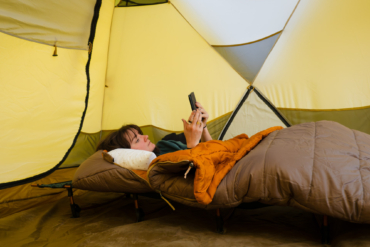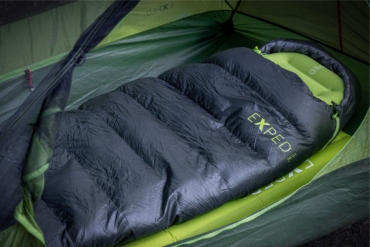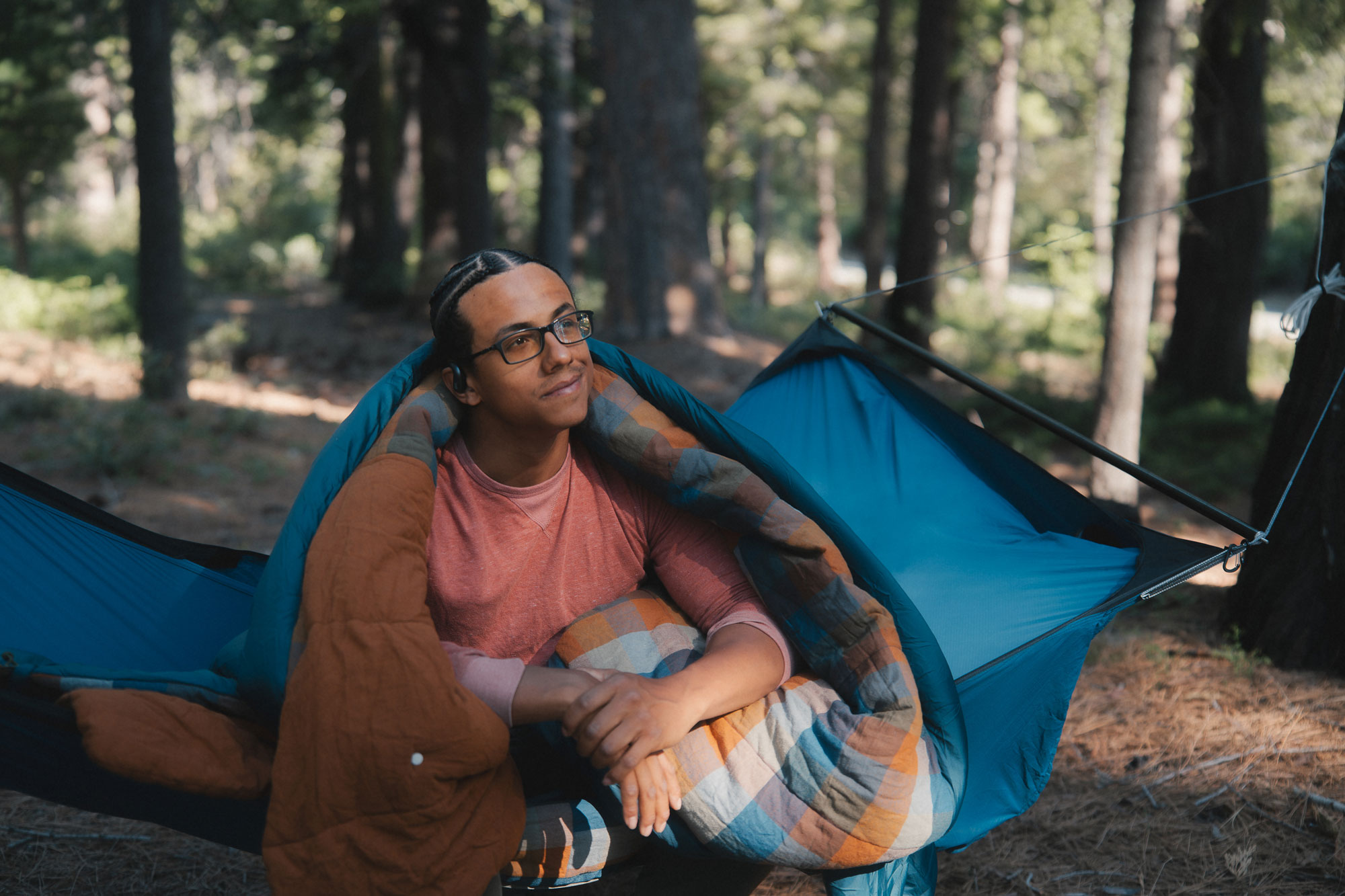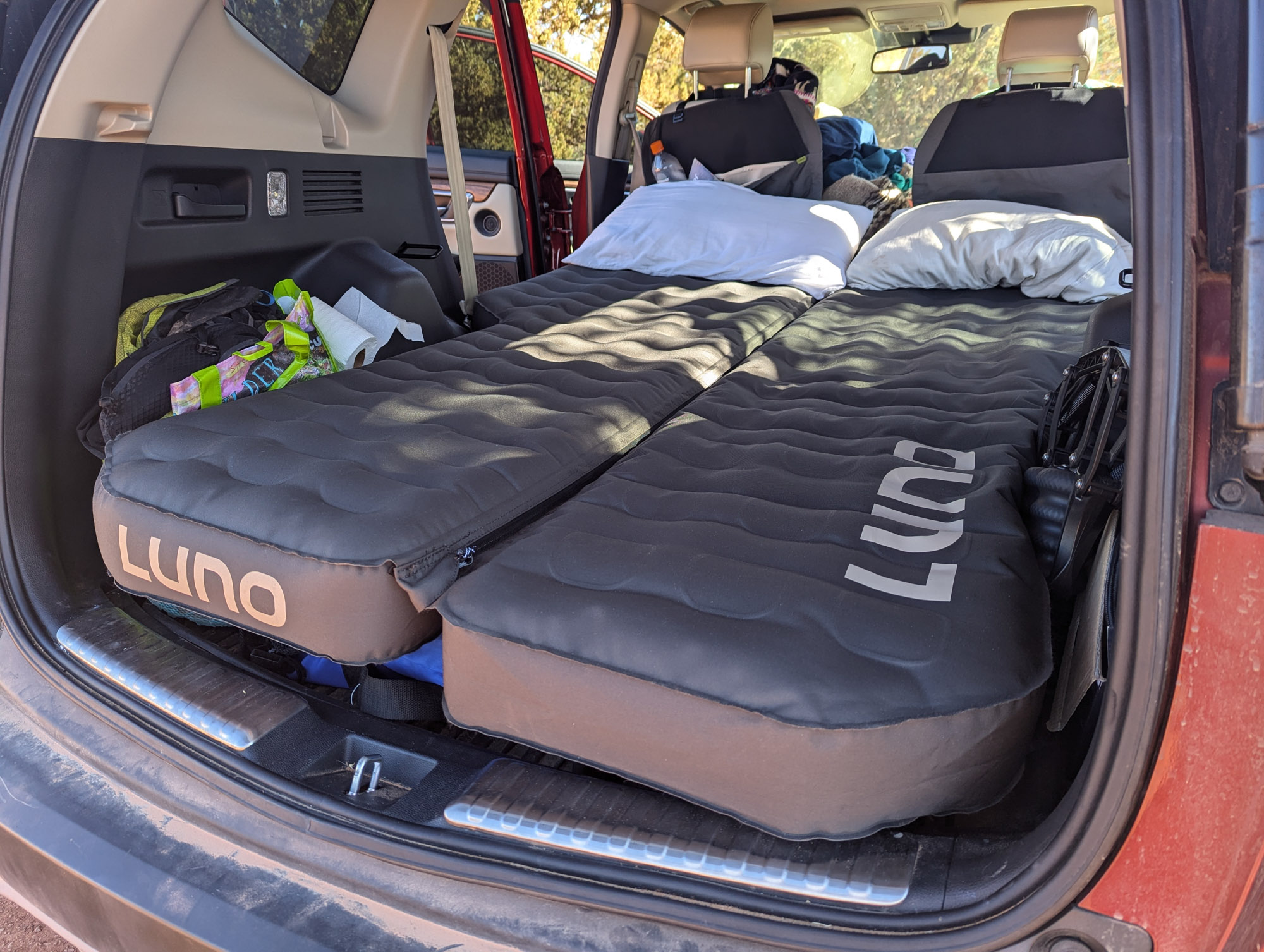For the first time, Patagonia will sell a sleeping bag line. It offers modern materials and new features, though with homage to a decades-old design.
In 1972, as a dedicated climber and established maker of gear, Yvon Chouinard designed and then stitched a sleeping bag for himself.
The future founder of Patagonia stuffed raw goose down into the channels of a mummy-style bag, adding a center-front zipper to let him tie-in at belays on big walls and high peaks to cook or sleep.
This month, Patagonia nods to Chouinard’s original design with the launch of a sleeping bag line.
The company notes the bags, which are Patagonia’s first commercial entry into the category, are “45 years in the making.”
Review: Patagonia Sleeping Bags
We received a pre-release sleeping bag from Patagonia for this review. The sleeping bags hit the market today (March 1, 2017). At first glance, our test bag was sleek, light, billowy, and warm for its weight.
The hood, baffles, and body borrow directly from Patagonia’s jacket design, both in function and in look.

We tested the 850 Down Sleeping Bag (that is the official name), rated to 19°F. It comes in three sizes (5’6″, 6′, and 6’6″), two colors, and starts at $479 (up to $519 at its largest size).
For that premium price you get a top-end bag. It’s different than most of what’s on the market, including an ultralight 15-denier fabric and complex, asymmetrical baffle construction (more on this below).

The insulation is a luxuriously light 850-fill goose down. Patagonia notes the down can be traced from its farm origin to the factory in order to “help ensure the birds that supply it are not force-fed or live-plucked.”
The exterior nylon is a thin rip-stop, the branded Quantum fabric made by Pertex. The company notes it is about half the weight (and twice the strength) of the shell fabric types used on its down jackets.
There is a DWR (durable water repellent) finish on the nylon to protect from moisture in a tent or even light precipitation at an exposed bivy. Our test bag, after a few uses and with its DWR still fresh, was nearly waterproof. (Of note: The down Patagonia uses is not treated to be hydrophobic.)
The bag weighed 2 pounds even on our scale without a stuff sack, and it packs relatively small. With a 19-degree rating it’s a good all-around bag that can be used many months of the year.

Sleep Test: Patagonia Bags
As with any sleeping bag, there are many factors to warmth, from the pad used, to clothing worn, to individual physiological (and psychological) tolerances. But we slept in temps around this bag’s rating and it proved honest to its claim.
One night, with temps in the mid-20s, I slept on a thin foam pad and wearing two layers — a base top and a mid-layer — and the 19-degree bag was comfortable.
The hood wraps the face nicely. The overall fit of the bag is trim; there is little dead space, and the baffles hug close.
Sleeping Bag: Technical Breakdown
Patagonia touts “comprehensive differential baffle construction” with the bag. That means the down channels are cut asymmetrically to keep down feathers better lofted. It can also eliminate cold spots, Patagonia notes.
The liner fabric is smaller than the outer shell, requiring a complex and labor-intensive process to make the baffled body. It’s subtle but effective.
I spoke with Jenna Johnson, Patagonia’s Senior Director of Global Technical Outdoor, for a breakdown. She said the construction keeps the goose down in place and “you never fully compress the down” when in the bag.
She continued, “Even if you’re stretching the inside liner by pressing against it, there is a constant lining of down outside” of the baffle.
Indeed, in my review the bag was holistically warm. Its channels of down seemed to inflate as I lied down, vertical rows along the body trapping heat. Patagonia designed a nice hood and foot box, keeping both ends cozy, too.

Like on a puffy down jacket, the zipper slips into a little “garage” at the top, a common touch. Small toggles pull the hood tight, cinching it around your face.
The main zipper opens on both ends; you can zip it down for ventilation or open it up at the bottom. This feature, combined with the center position, would let you go to sleep, as Chouinard ostensibly did, wearing a harness connected to a rope snaked in near the waist.
The zipper moves easily, tugged along by its exaggerated cord pulls. The center position makes the zipper simple to work with lying supine or sitting up, and the teeth rarely snag.

Sleeping Bags: Market Comparisons (What To Buy)
A handful of sleeping bags from other brands compete with the Patagonia models. The Phase 20 from Marmot, as one example, uses the same down quality, and it costs and weighs about the same ($479, 1lbs 11oz). It’s rated to 20 degrees and with lithe Pertex Quantum GL fabric packs up small.
The North Face sells the Inferno 15 for $499. Its similar specs include 800-fill goose down and its namesake 15-degree temp rating. The bag weighs 2 pounds 5 ounces, or a bit more than the Patagonia 19-degree.
Mountain Hardwear, Sea To Summit, NEMO, Sierra Designs, and several other brands have similar lightweight sleeping bags, including with high-loft down, thin fabric, and body-hugging warmth.
Granted, you can pay much less for a sleeping bag. Search REI or any retailer and you’ll see sub-20-degree models for hundreds of dollars less.
The REI Co-op Radiant Sleeping Bag is a great example. The 19-degree, down-insulated bag starts at just $119. It weighs about a pound more than the Patagonia 19-degree and uses a fine (but lower-quality) 600-fill duck down.
The big price difference comes from the super high quality 850 fill down, which costs a lot to source.
Why would anyone spend around $500 for a similar sleeping bag? The truth is, most people should not. If your sleeping bag needs don’t go beyond casual backpacking trips, something like the Patagonia 850 Down Sleeping Bag will be overkill.
But if you’re purchasing tip-of-spear ultralight gear for mountaineering or more extreme feats, then the higher-quality down, increased packability, decreased weight, and feature upgrades can be worth the extra cash.
With a bag like the Patagonia 850 Down Sleeping Bag, you get a product that will last many years. Its zipper is replaceable. It’s built meticulously at each stitch, and uses the best materials, a technical tool for mountaineers and people on expeditions where each ounce counts.
Zip in for the night, perhaps tied-in like Chouinard on a cliff-side somewhere. Cinch the hood tight, and feel the down bulk and trap your body heat. This is a technical cocoon made to let you sleep warm and travel fast in some of the wildest places on the planet.
–See all the details here on Patagonia’s sleeping bag line.










